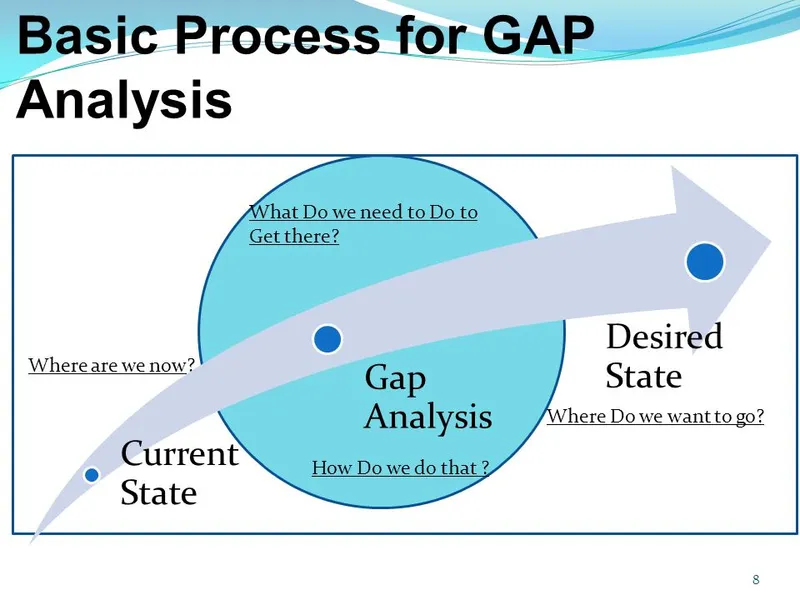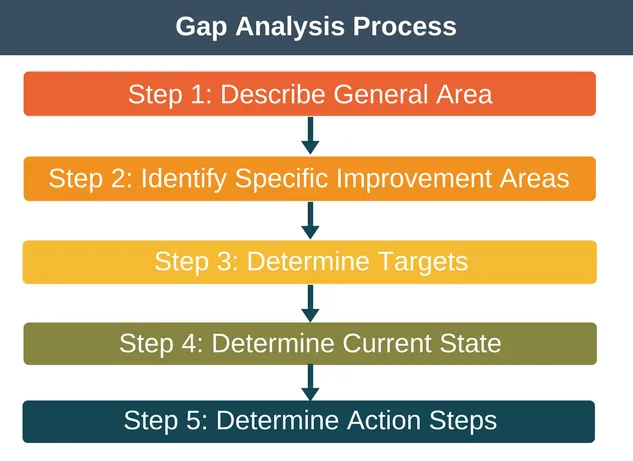

What is GAP Analysis in Project Management & How to perform?
Gap Analysis in Project Management is which helps to identify what needs to get done to deliver the best service quality for customers.

In today’s modern world, everyone is competing to achieve their target, but there is a gap between their target & achievement. Gap is the difference between customers’ expectations and perceptions, while in term of project management, gap means delivering best service quality based on customer’s expectation and their needs. The application of gap analysis in project management is obvious. As a project manager, you’re trying to control various activities in a project, all of which might have various solutions. What’s the best course of action that leads to project success? That’s where gap analysis comes in. It helps to identify what needs to get done while meeting your company’s and project’s goals and objectives.
Gap analysis helps project manager & stakeholders to reexamine its goals to determine whether it is on the right path to be able to accomplish them at scheduled time with same satisfactory level which was desired. It is a simple tool which is used by organizations to raise their performance level. A Gap Analysis helps an organization to understand what they want to be, the gap between where they are now and where they want to be and hence, what steps should be taken to close the gap.
Basic Process for GAP Analysis

From the diagram we can see that, to get from our current state to our desired state there will be a number of key steps we need to take to bridge the gap. From this we will create an action plan outlining the exact actions that we’ll take to achieve each step so we eventually close the gap.
Gap Analysis Process
There are many methods to perform a Gap Analysis in project management. The process in this consists of 5 steps:

1. Describe General Area
In this step we describe the general area that we want to analyze and improve. Here we are not only highlighting what general area is under investigation, but also what areas are not under investigation. This helps to avoid scope creep and keeps the rest of the analysis very focused.
2. Identify Specific Improvement Areas
In this step we identify specific areas for enhancement within the general area described in step 1. For example, if the general area we are investigating is our online marketing, then we may identify content creation and paid advertising as specific areas we’d like to improve.
3. Determine Targets
A common input to this step is bench-marking whereby a company will benchmark its performance in an area against its competitor’s performance in that same area. The results of this exercise will show areas of under-performance and these areas are then commonly chosen as the improvement areas for this step.
4. Determine Current State
By understanding where we are it makes it more likely we’ll create a realistic action plan. It also makes it easier to see if we are making progress towards our desired state, because if we don’t know where we started then it’s very difficult to measure progress towards our goal.
5. Determine Action Steps
This step is our action plan to get to where we want to be. The action plan should be prioritized so as to provide the biggest return on investment. One way to do this is to give importance to the most critical gaps first, or to target low hanging gaps first.
Check out this list of the Top Project Management Software System under the basis of Reviews, Price, Features, User-friendly and Efficiency.
Best Project Management Software:
1. IPIX TMS
2. JIRA
3. WRIKE
4. ZOHO






